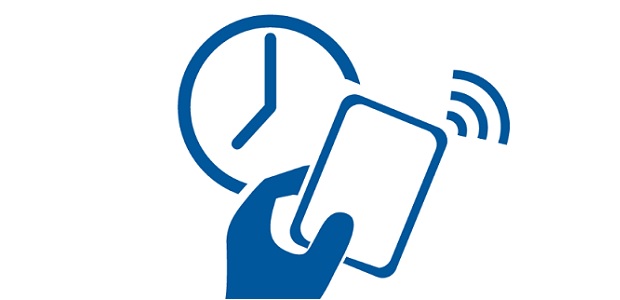Instant Payments scheme in EU to be ready by November 2017

The Payment Services Directive 2 (PSD2) and Instant Payments (SCT Inst) are two major changes that will disrupt the European payments landscape before 2020 and will increase competition and level of innovation in the payments sector.
Instant payments already exist in Europe (the UK, Sweden, Denmark, Poland or Switzerland have successfully implemented local instant payment solutions and Netherlands is planning to deliver an instant payment infrastructure compliant with SCT Inst, but more ambitious by May 2019). For the moment they operate within the borders of a country or among the customers of the same payment services provider.
In order to avoid fragmentation and to encourage the harmonisation of euro payments across the continent, the European Payments Council (EPC) was invited by the Euro Retail Payments Board (ERPB) to develop an instant credit transfer scheme for all euro payments.
Regarding the term instant payment, ERPB has defined it as „electronic retail payment solutions available 24/7/365 and resulting in the immediate or close-to-immediate interbank clearing of the transaction and crediting of the payee’s account with confirmation to the payer (within seconds of payment initiation). This is irrespective of the underlying payment instrument used (credit transfer, direct debit or payment card) and of the underlying arrangements for clearing (whether bilateral interbank clearing or clearing via infrastructures) and settlement (e.g. with guarantees or in real time) that make this possible.”
Further, according to the European Central Bank the instant payment solutions „should be understood as “cashless cash”: in the era of e-commerce and digital communication users expect such solutions to be available and to deliver the same payment experience as cash, i.e. not only provide immediate confirmation that funds are available on the payer’s account, but also immediate availability of such funds to the payee.”
The background and the roadmap for Instant Payments
. In December 2014, ERPB identified the need for at least one euro instant payment solution available to all payment services providers (PSPs) in Europe.
. In June 2015, EPC submitted an Instant Payments report to ERPB in relation to the implementation of a Single Euro Payments Area (SEPA) Instant Credit Transfer scheme – the SCT Inst scheme.
. In November 2015, ERPB approved the EPC’s proposal containing key features of SCT Inst scheme.
. In April 2016, EPC issued the draft SCT Inst rulebook for a public consultation which took place between 12 April and 10 July.
. In November 2016, EPC will publish the first formal version of the SCT Inst rulebook.
. In November 2017, the SCT Inst scheme will go live.
What is SCT Inst and who will benefit from it?
According to EPC, SCT Inst is the first in the world instant payment scheme to be inter-operable in a region as large as SEPA and is a response to European customer needs for faster payments.
The SCT Inst scheme rulebook provides a set of interbank rules, practices and standards that all PSPs who want to adhere to this scheme should follow (the SCT Inst will be an optional scheme).
The beneficiaries of SCT Inst will not be only the consumers (which will be able to make and receive payments 24/7/365 with immediate transfer of funds), but also the businesses (the number of late payments will be reduced, the cash flow will be improved) and the governments or the payment services providers (new business opportunities through value-added products).
The main features of the proposed SCT Inst scheme are outlined below:
. The geographical scope of the scheme spans across the 34 countries which are within the scope of the current SEPA schemes (i.e. the 28 countries of the European Union, plus Iceland, Norway, Liechtenstein, Switzerland, Monaco and San Marino).
. Individuals, businesses, and government entities will be able to use the SCT Inst, in the role of either the originator or the beneficiary of a transaction.
. The scheme is based as much as possible on the existing SEPA Credit Transfer scheme and still includes many of its successful features (e.g., the SCT Inst scheme will be based on ISO 20022 XML messages). This has been designed to facilitate a faster and cheaper implementation for scheme participants.
. It applies to credit transfers made in euro, up to an initial maximum amount of 15,000 euro per transaction. It means that within ten seconds, the PSP of the person receiving the payment will report to the PSP sending the payment either that the funds have been made available on the beneficiary’s account, or that the SCT Inst transaction has been rejected.
. The money will be available in the account of the payee within ten seconds.
. Individual scheme participants can agree bilaterally or multilaterally (e.g. within a specific SEPA country) on a lower maximum execution time and a higher maximum amount if they wish.
All adhering scheme participants will have to be technically capable to process the SCT Inst transactions on a 24/7/365 basis.
Source: Tudor Nistor – banking and payment services lawyer, specialized on e-payments and e-money regulatory matters as well as on project finance transactions
Dariusz Mazurkiewicz – CEO at BLIK Polish Payment Standard
Banking 4.0 – „how was the experience for you”
„To be honest I think that Sinaia, your conference, is much better then Davos.”
Many more interesting quotes in the video below:










